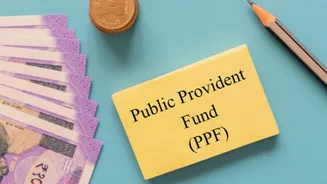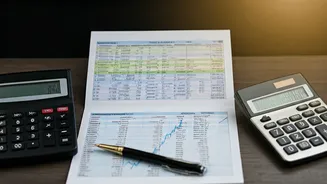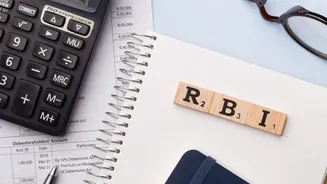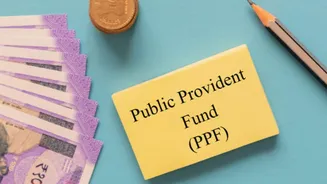Emergency Fund: Key Concepts
An emergency fund is essentially a financial cushion designed to handle unexpected expenses or financial hardships, such as job loss, medical emergencies,
or significant home repairs. It acts as a safety net, preventing you from going into debt or having to liquidate long-term investments in difficult situations. The ideal size of an emergency fund varies, but a common recommendation is to save 3 to 6 months' worth of living expenses. This means calculating your essential monthly costs, including housing, food, transportation, and other vital expenses, and then multiplying that amount by the number of months you wish to cover. Keeping your emergency fund separate from your regular savings is advisable, making it readily accessible when needed. Maintaining this financial buffer gives you peace of mind and financial security during challenging times.
RBI Bond: An Overview
The Reserve Bank of India (RBI) offers a floating-rate bond, which is an investment instrument designed to provide a return that fluctuates with prevailing market interest rates. The interest rate on these bonds is not fixed; instead, it is linked to a benchmark rate, often the National Savings Certificate (NSC) rate. This means the return you receive can change over the bond's tenure, potentially offering higher returns in a rising interest rate environment. An RBI floating-rate bond at 8.05% has the potential to offer a competitive yield. These bonds are usually issued with a specific maturity period, providing a timeframe for your investment. They are typically considered a relatively safe investment option due to their backing by the RBI, making them an attractive alternative for those looking for a combination of safety and potentially higher returns compared to traditional fixed deposits.
FDs: What to Know
Fixed deposits (FDs) are a popular investment choice in India, offering a fixed interest rate for a specific period. Banks and other financial institutions offer these, providing a guaranteed return on the invested amount. The interest rates on FDs are predetermined at the time of investment and remain constant throughout the tenure. The tenure options vary widely, from a few months to several years, allowing investors to choose a term that aligns with their financial goals and liquidity needs. While FDs provide a sense of stability and predictability, their returns may not always keep pace with inflation, especially during periods of rising interest rates. The interest earned on FDs is generally taxable, which can affect the overall returns. However, FDs remain a widely used investment tool for their safety and ease of use, making them a suitable option for those seeking a secure investment avenue.
Bond vs. FD: Comparison
The RBI's 8.05% floating-rate bond, compared to standard bank FDs, presents a nuanced financial decision. The bond's floating interest rate adjusts, possibly increasing returns as market rates rise, which is a key advantage. Bank FDs, on the other hand, provide a fixed interest rate, offering certainty but potentially missing out on higher returns if rates climb. Considering the safety aspect, both options are relatively secure, but the RBI bond benefits from backing by the central bank. The liquidity of these two options can differ; FDs may have penalties for premature withdrawals, while bond terms and conditions should be carefully evaluated. The choice often depends on your outlook on interest rate movements and your risk appetite. If you anticipate rising rates, the bond may be preferable; otherwise, a well-chosen FD could be a secure option.
Building Your Emergency Fund
Creating an emergency fund requires a systematic approach. The initial step is to calculate your monthly expenses, including essential costs like housing, food, utilities, and transportation. Then, aim to save 3 to 6 months of these expenses. Automating your savings is crucial; setting up a direct transfer from your checking account to your emergency fund account makes saving effortless. It's also important to reduce unnecessary spending. Examine your current expenses and identify areas where you can cut back, such as entertainment or dining out. Consider setting financial goals to stay motivated. Breaking down your savings target into smaller, achievable milestones can make the process less daunting. Periodically review and adjust your fund as your financial situation changes. Life evolves, so your emergency fund must also. Finally, store the fund in a readily accessible, safe place like a savings account or, as explored here, a suitable bond or FD.
Fund Without Sacrificing Joy
Building an emergency fund doesn't require sacrificing all the pleasures in your life. Budgeting effectively is key; allocate funds for your emergency savings, and then plan how to spend the rest. Identify and prioritize your essential and non-essential expenses. While it may be necessary to cut back on some discretionary spending, you can still enjoy your life. Explore cost-effective alternatives. Instead of eating out, consider cooking at home. Look for free or low-cost entertainment options such as visiting parks or attending community events. Set realistic financial goals. Avoid setting overly ambitious saving targets that could lead to burnout. Celebrate small wins. Acknowledge and reward yourself for achieving milestones, such as reaching a certain savings amount. Review and adjust your budget regularly. As your income changes, adjust your financial plan accordingly to ensure it suits your lifestyle.
















